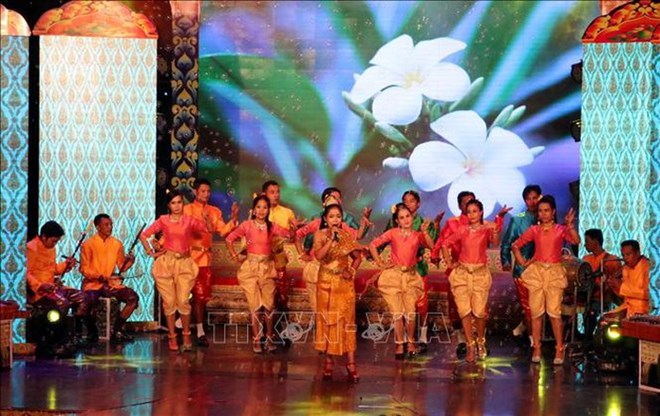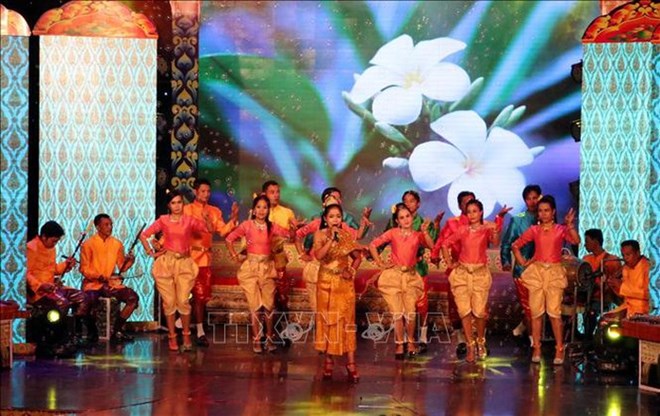
The first Khmer folk singing festival of the Mekong Delta region opened in Soc Trang province on October 1, drawing more than 300 contestants, mostly students, amateur artists and artisans from regional localities.

A performance at the festival (Photo: VNA)
The 96 performances at the festival were themed around the Party,
President Ho Chi Minh, as well as positive changes in several localities, the
love for homeland, traditional festivals, and family sentiments.
Following the opening ceremony, audiences were able to enjoy nine folk
performances.
Soc Trang is home to a large society of Khmer people. According to Nguyen Van
Bon, Director of the provincial radio and TV station and head of the organising
board, the event is a chance for amateur singers to share and exchange
experience to promote the traditional culture of Khmer people through folk
songs and musical instruments.
The festival is also an opportunity to honour, preserve, and develop the unique
art of the Khmer people, contributing to developing the cultural identities of
the group, while meeting the demand for folk art from locals and audiences from
other localities, he said.
The festival will run until October 5 in Studio 3 of the Soc Trang radio-TV
station. The opening and closing ceremonies are broadcast live on channels STV1
and STV2 of Soc Trang TV, as well as channel 5 of the Vietnam Television.
Source: VNA
The People’s Committee of Lac Son district held a ceremony on April 28 to receive the provincial relic certificate for the ancient rock carving site at Suoi Co stream, located in My Thanh commune.
A special music show titled "The country is in the fullness of joy” has been held at Hoa Binh Square in Hoa Binh city in celebration of the 50th anniversary of the liberation of the South and national reunification (April 30, 1975–2025).
The People's Committee of Lo Son commune, Tan Lac district, has organised the local annual traditional stream fishing festival on April 19 - 20.
As a land deeply intertwined with human history and Vietnam’s millennia-long journey of nation-building and defence, Hoa Binh is often revered for its epic tales and legends.
Residents of Hoa Binh boast a rich cultural identity, reflected in their unique language, traditional attire, customs, and folk melodies – described as "sweet as honey, clear as a mountain stream.”
Lac Son district’s Vu ban town held the 2025 Truong Kha temple festival on April 12–13 (the 15th–16th days of the third lunar month). Since its revival in 2019, the festival has been organised every three years, preserving valuable intangible heritage while meeting the community’s cultural and spiritual needs.



